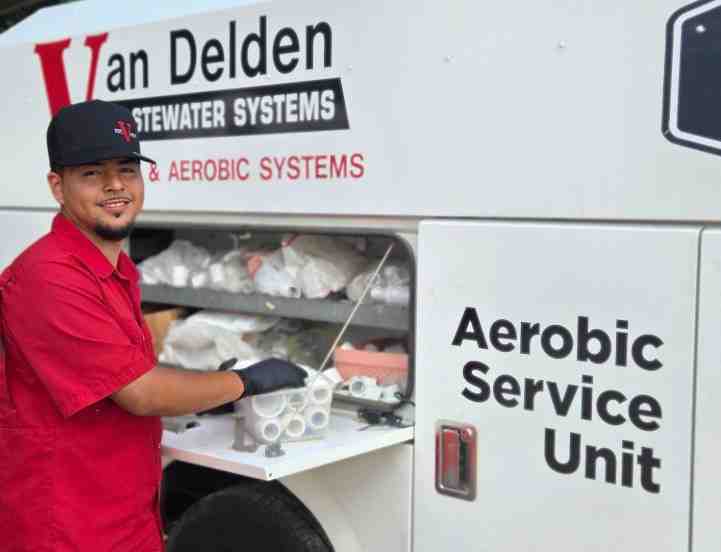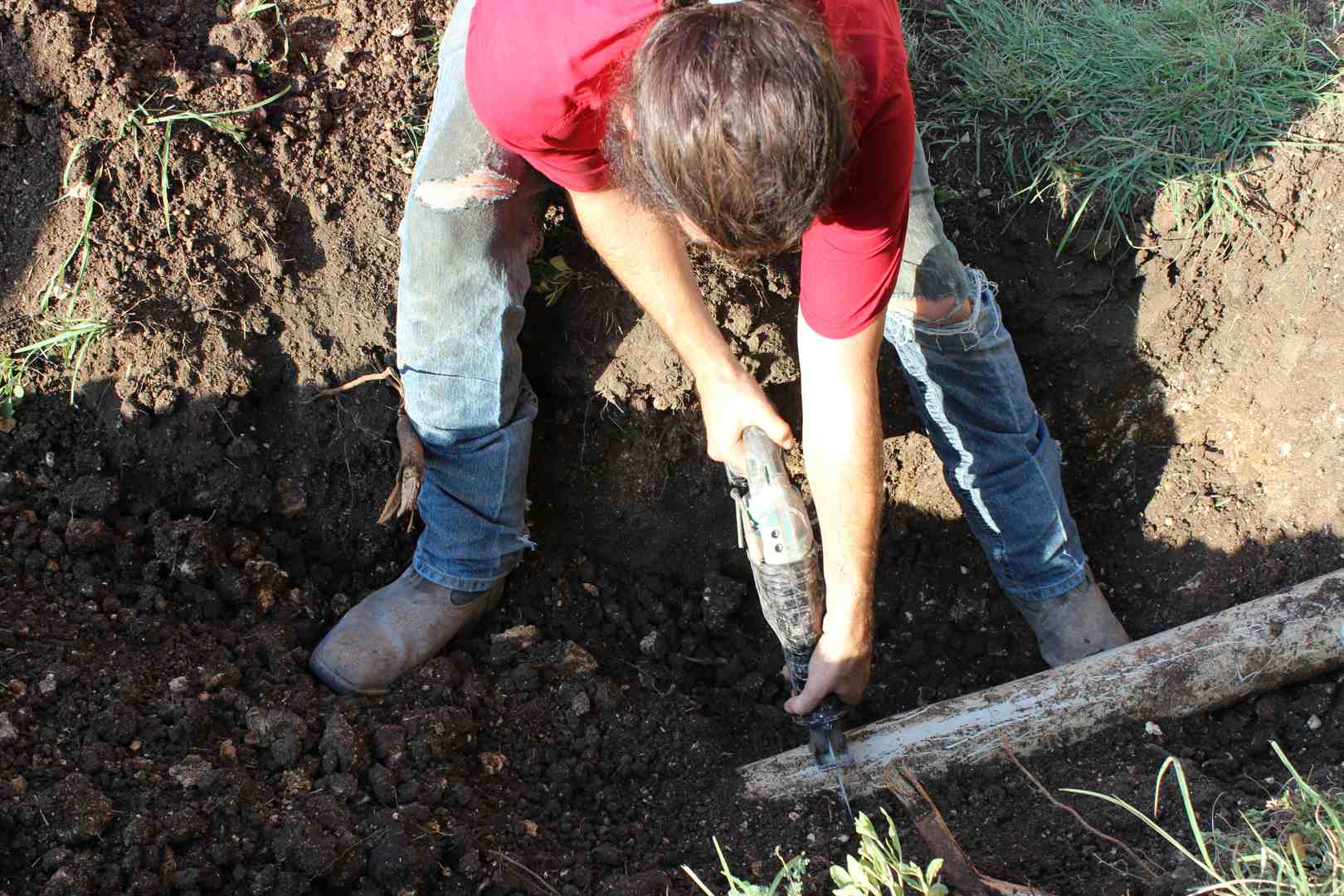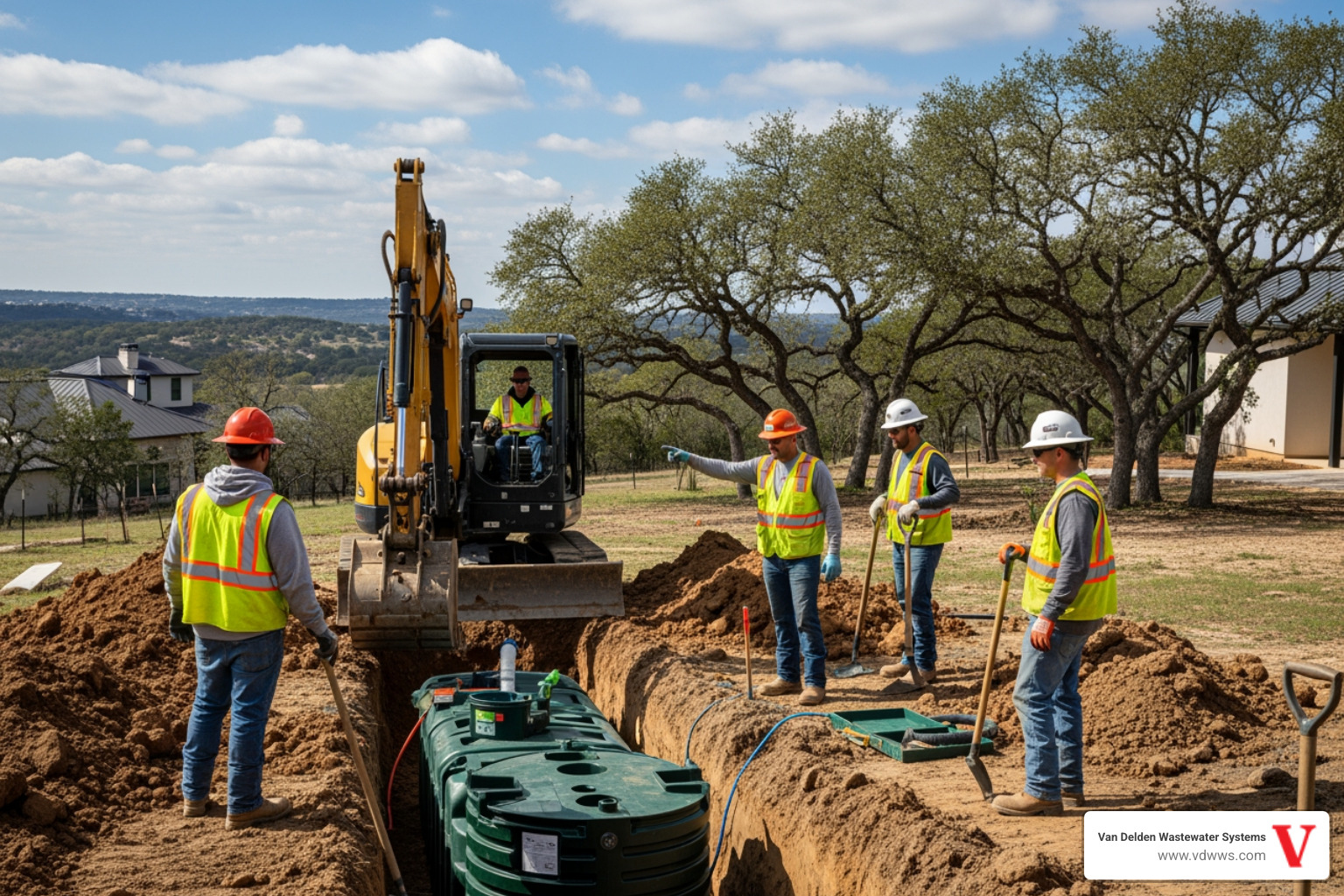Many homeowners in San Antonio don’t realize how much a high water table can affect the health of their drainfield. During the summer, when rainstorms can come quickly and soak the ground, these issues become more noticeable. Water starts pooling in the yard, drains indoors slow down, and odors near the system become more frequent. Most of these problems trace back to the ground being too water-saturated for the drainfield to work properly. Without a way for wastewater to filter through and disperse, the system struggles to function — and that can lead to bigger and more expensive issues if ignored.
Managing a septic system in San Antonio comes with its own challenges, especially when rain or flooding raise water levels underground. If a property’s drainfield can’t handle the added pressure of these conditions, the entire septic system can become backed up or damaged. Understanding why this happens, what it looks like, and how to prevent it allows property owners to keep things running smoothly, even when the environment doesn’t cooperate.
Understanding High Water Tables
A high water table refers to when the ground just below the surface is already filled with water, leaving little room for more to soak in. In normal conditions, the soil absorbs a mix of rainwater and treated wastewater, allowing it to move slowly back into the environment. But when the area gets too much rainfall or has poor soil drainage, water can collect close to the surface, essentially turning your yard into a saturated sponge. When that happens, it's harder for your septic system to release wastewater safely through the drainfield.
In San Antonio, this can happen more often in areas with dense clay-heavy soil or zones that don’t drain easily after storms. Certain neighborhoods may also naturally have higher water tables, depending on their elevation and soil composition. Add the effect of summer thunderstorms and city-wide infrastructure that may not absorb water as quickly, and it’s easy to see why so many properties run into recurring problems during wetter months.
A high water table can show up in different ways, such as:
- Slow flushing toilets
- Gurgling sounds from sinks and showers
- Standing water in parts of your yard not affected by sprinklers
- Strong, musty odors around the drainfield
- Wastewater backing up into the home
When these problems show up during or after a stretch of heavy rain, it’s often a warning sign that the drainfield is overwhelmed. If these signs are happening more than once a year, it may be time to take steps to prevent long-term damage to the system and protect your property from future wastewater backups.
Impact Of High Water Tables On Drainfields
Your drainfield is the part of the system responsible for filtering treated water back into the ground. It counts on the soil beneath it to absorb and process that water safely. But when the area is already saturated, the wastewater has nowhere to go. Instead of draining off and being filtered, it lingers in the pipes or, worse, rises to the surface.
When high water tables press up against the drainfield's buried pipes, a few things can go wrong:
1. Soil can't absorb wastewater, so it starts pooling in the yard.
2. Pipes lose oxygen around them, which interferes with natural treatment processes.
3. If water sits in the system too long, solid waste can clog the drainfield or wash into it, causing permanent damage.
Over time, a drainfield that regularly sits in saturated soil becomes less effective. It won’t filter bacteria and contaminants the way it’s supposed to. Meanwhile, all that stress on the pipes increases the risk of backups into sinks, toilets, and tubs.
It’s especially important to monitor changes after significant rain. For example, if your neighbor’s lawn dries out a day after a storm but yours is still swampy by day three, you may be dealing with drainage issues or a system unable to keep up because of higher groundwater. Fixing these problems earlier can go a long way toward protecting your home and your drainfield.
Solutions for Managing High Water Tables in San Antonio
When dealing with high water tables, the first priority should be keeping the drainfield from being submerged for too long. Homeowners need to create conditions where water can leave the soil faster than it arrives. That’s especially important during the summer months in San Antonio when sudden rainstorms are common and the soil doesn't always dry quickly.
There are specific steps that help ease the strain on your drainfield during periods of high groundwater:
- Redirect gutter downspouts and stormwater runoff away from the septic area.
- Avoid parking or placing heavy materials over the drainfield to keep the soil from compacting.
- Reduce indoor water usage during and after heavy rains to allow the drainfield time to recover.
- Check the area frequently for standing water, strong odors, or slow-draining fixtures.
- Schedule regular drainfield cleaning and system checks to make sure everything is functioning properly.
In San Antonio, summer rain can linger in low-lying areas longer than expected. If your drainfield stays wet, it isn’t just an inconvenience — it can become a serious risk to the system. A property owner once noticed puddles in the same corner of the backyard week after week. Regular lawn watering wasn’t the issue. After a system check and cleaning, it became clear the drainfield wasn’t keeping up due to high groundwater. Acting early helped bring things back to normal without permanent damage.
Trying to manage these conditions with basic yard maintenance often isn’t enough. Professional drainfield cleaning gives the system a needed reset and allows clear identification of stress points. This gives you a clear understanding of how water is moving through your septic system and helps prevent larger problems down the line.
Long-Term Drainfield Protection Strategies
Short-term fixes help when the water table rises quickly, but for properties in flood-prone areas or low-draining parts of San Antonio, long-term solutions can make all the difference. Thinking ahead helps avoid repeated damage and extends the life of the system.
Here are long-term strategies to protect your drainfield:
1. Hire professionals to check drainage slopes around the drainfield and adjust grading so stormwater flows away.
2. Replace lawn areas over the drainfield with native plants that require less watering and support natural drainage.
3. Install French drains or curtain drains upslope to reroute groundwater before it reaches the septic area.
4. Make sure the septic tank is pumped and cleaned on a regular schedule to reduce stress on the drainfield.
5. Avoid large water surges, like running the dishwasher, washing machine, and shower at the same time, especially after heavy rain.
These steps help prevent major structural damage to the system and reduce the risk of expensive failures. Everything from landscaping choices to how water flows across your yard can impact how your septic system works during wet conditions.
Regular checks and scheduled maintenance also help catch problems early before they turn into costly repairs. If you're unsure whether your property needs extra protection or you're noticing patterns in drainfield performance, it’s worth getting a professional opinion.
Keeping Your Drainfield Healthy Year-Round
Managing drainfield performance during high water table conditions isn’t only about reacting when there’s a problem. It’s about long-term care and knowing how specific seasons affect your system. San Antonio homeowners especially need to pay attention during late spring and throughout the summer when rain patterns shift and water levels underground can rise quickly.
Drainfield cleaning, smart yard design, and water use habits all play a role in protecting the system. A property that drains well, paired with regular maintenance and proper groundwater control, stands a far better chance of avoiding system backups and slowdowns.
Taking these steps not only improves how your system works today but helps extend its life for years to come. If you’ve dealt with groundwater-related issues in the past or want to prepare ahead, working with professionals who understand local soil conditions and drainfield behavior can make that process much clearer.
Maintaining a healthy septic system involves timely septic tank cleaning along with reliable drainfield cleaning in San Antonio to keep wastewater flowing correctly and prevent issues after heavy rain. At Van Delden Wastewater Systems, our professionals understand that proactive upkeep can help avoid costly repairs and system failures. If you notice signs of a stressed system or changes in water drainage, consider scheduling a service to address these concerns. For a quick estimate or to book a service visit, please contact us today.
Customer Reviews
Peter was personable, professional and thorough. Highly recommend Van Delden. You might be able to find a cheaper company but not better!
On time. 100% professional, knowledgeable, and courteous. Very helpful and straightforward. That is the bar all businesses should strive for.
It has been a pleasure working with your company. Not only did y’all communicate very well but your workers were always polite! Thank you!
“I thank Van Delden for such prompt service. Honest people are hard to come by these days. I will certainly recommend Van Delden to anyone! Jesse is an upstanding young man and very nice to talk to. I thank everyone at Van Delden for taking such good care of me.”
This is just a note to thank you for explaining the problem with my system. You didn’t have to be so kind and I appreciate your good business ethics and time spent. In the future you will have mine in return!






